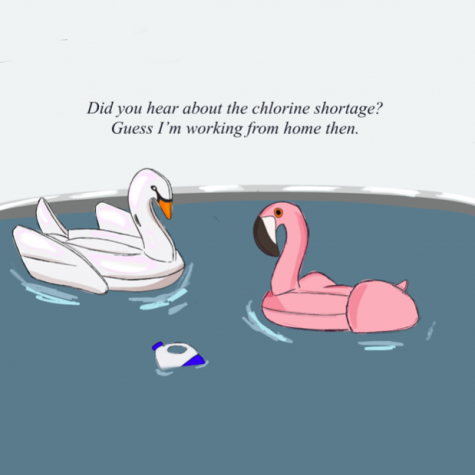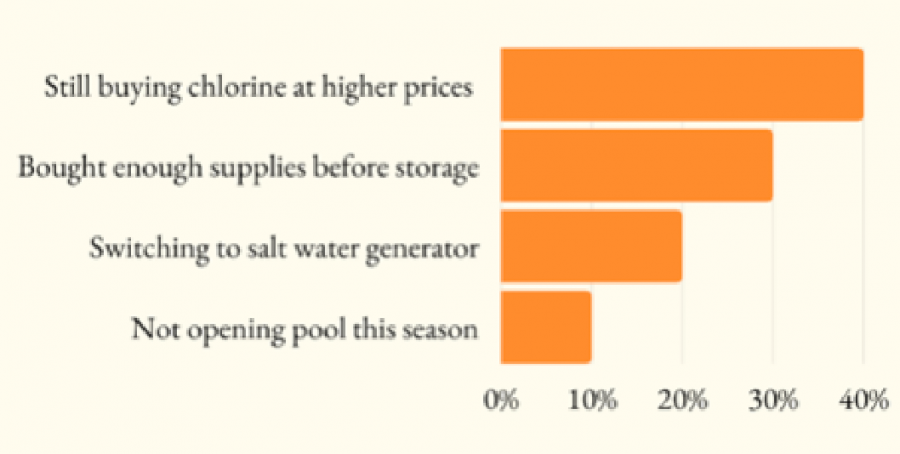Hommocks Persists through National Chlorine Shortage
With a nation-wide chlorine shortage, how is Hommocks Pool continuing to operate?
How municipalities have responded to the shortage.
June 23, 2021

Memorial Day often marks the beginning of the outdoor swimming season in Mamaroneck and Larchmont, but due to an incident at a chlorine plant in Louisiana last year, some pool owners are scrambling to deal with a potential shortage of chlorine powder and tablets this year. Liquid chlorine also faces limitations due to a national shortage of plastic used to make the containers, and the global plastic shortage may spread to affect more industries.
In August 2020, Hurricane Laura hit the South causing a fire to break out in a chlorine plant in Lake Charles, Louisiana. According to local news sources at the time, the chemical fire was finally extinguished at the Biolab chlorine plant after three days. Bio-Lab Inc., the manufacturer, has applied to rebuild the plant, but construction has not yet begun. This has led to an ongoing shortage of certain swimming pool chlorine products.
Many residential pool owners and operators use specific types of chlorine to sanitize their pools, while larger facilities use different types. According to Jennifer Pollak, the Town of Mamaroneck Recreation Supervisor and Aquatics Director, the town thankfully does not face any shortages of chlorine for its two outdoor pools at the Hommocks Pool complex. The indoor and outdoor pools both rely on chlorine tablets, which are used in other large pools such as the Rye YMCA. The tablets were chosen over liquid chlorine because the supervisors wanted to maintain a safe environment, and “liquid chlorine is basically bleach, so if it were to spill or not properly handled, it could be dangerous, whereas the tablets are more stable and easier to control/maintain. As well, the system that was set up when I started here also used the briquettes (chlorine tablets),” said Pollak.
The entirety of the Hommocks pool is run as two separate entities: the school district oversees the indoor pool, while the town runs the outdoor pool. According to Pollak, the indoor and outdoor pools order from the same companies and function under the same operating system. Therefore, chlorine briquettes are also used to maintain the sterility of the indoor pool. The Hommocks pool complex will be open for the hot summer ahead, and will be in good shape for the MHS girls and boys varsity swim teams, which take place during the fall and winter, respectively.
The national pool chlorine shortage has had a significant effect on chlorine tablet accessibility and prices. Prices for chlorine tablets have jumped as much as four or five times their usual amount due to the fear of shortage. A 40-pound container of a popular brand on Amazon.com had cost roughly $100 since 2016 until July of last year, when the price was raised to $314.
Generally, for larger pool facilities, the more familiar liquid chlorine is most often used. Similar to household liquid bleach, liquid chlorine is actually a solution of sodium hypochlorite. While household bleach comes in smaller, portable containers, the supplies for large swimming pools often come in large 55-gallon drums.
Unfortunately, according to Bel Aqua pool supply in New Rochelle, a plastic shortage is now causing more issues, such as a liquid chlorine shortage. The plastic shortage stems from a lack of the base chemicals ethylene and propylene, the basic components of plastic. Not only are chemical containers affected, but also other industries that rely on plastics, such as the auto industry and medical industry. Despite these shortages, the swimming season will not be interrupted, thanks to careful planning by the town.






